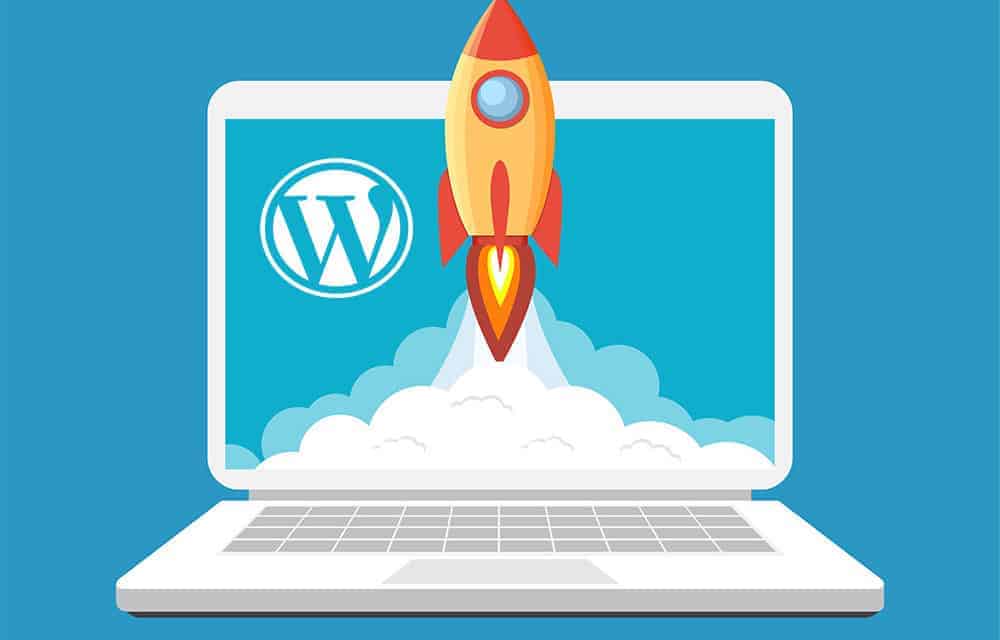
With the release of Core Web Vitals in May 2021, Google confirmed the importance of “page loading performance” to user experience, which is one of their highest ranking factors. With a slow loading page speed, you might not only be losing online visitors but also the chance to rank up on Google Search Results. Cybertegic is a digital marketing company in Los Angeles with years of experience in WordPress Website Development.
To share our expertise, we list eight tips on how web owners can speed up their WordPress website.
8 Tips to Speed Up Your WordPress Website
- Choose a good WordPress hosting provider.
- Use a lightweight theme.
- Minify CSS and JS files.
- Use a CDN.
- Install a WordPress Caching plugin.
- Update your WordPress site.
- Use lazy loading for images.
- Deactivate and uninstall unwanted plugins.
1 – Choose a good WordPress hosting provider.
A significant factor that can affect your website’s speed is your hosting provider. You can use an excellent shared hosting provider with features to optimize your website for performance.
However, keep in mind that using shared hosting services means that you are sharing the server resources with other customers. This means that your website performance can slow down if your neighboring site gets a lot of traffic.
The best solution is to find a managed WordPress hosting service. This hosting service delivers the most optimized server configurations to run your WordPress website. They also offer other security features to protect and maintain your website.
2 – Use a lightweight theme.
Most WordPress themes come with several dynamic elements, widgets, social icons, and other elements to make your website appealing to users. However, adding too many elements can affect the loading page performance of your website.
This is why it is highly recommended for website owners to use lightweight themes. You can choose to use a default WordPress theme. There are also several lightweight themes you can try, such as:
- Generate Press
- Astra
- Schema
- Elementor
- Genesis
- Divi
- Neve
- Hestia
- Customify
- Blank Canvas
3 – Minify CSS and JS files.
When running your website through the Google PageSpeed Insights tool, one of the most common suggestions it gives is to minimize the CSS and JS files. Reducing the sizes of your CSS and JS files will significantly improve the site-loading speed of your website.
You can manually minimize the size of your CSS and JS files on your website. However, if you don’t have the technical knowledge, you can use plugins to optimize your WordPress website’s CSS, JS, and HTML scripts.
4 – Use a CDN.
People who visit your website are located in different parts of the world. This also means that the site loading speed will vary if the visitor is located far away from where your site server is hosted. This is why it is best if you can use Content Delivery networks (CDN) to solve this issue. This can help keep the site-loading speed of your website to a minimum for visitors from various countries.
To explain how CDN works, these networks keep a copy of your website in different datacenters worldwide. The function of a CDN is to deliver the web page to a visitor from the nearest location.
5 – Install a WordPress Caching plugin.
WordPress websites are built dynamically, which means they are built every time an online user visits a page or post. To build your web pages, WordPress has to run a process to find all its information and display it to the user. A caching plugin can help fix this issue.
WordPress has caching plugins that can help your website load x2 to x5 faster. They work by making a copy of the page after the first load, and then it serves a cached version of the page to every returning visitor.
There are several WordPress caching plugins you can install on your website. Some recommended plugins are W3 Total Cache, WP Rocket, and WP Super Cache.
6 – Update your WordPress site.
WordPress is updated frequently by its developers. Each update includes new features and fixes security issues and bugs from the previous updates. Website owners will also need to regularly update their WordPress theme and plugins.
Not updating your WordPress site, theme, and plugins to their latest versions will cause your site to slow down. On top of it, it will also make your website vulnerable to security threats.
7 – Use lazy loading for images.
Adding many images, video embeds, and photo galleries to your web pages can slow down your website. Lazy loading can help remedy this issue. It works by downloading visual elements that will be visible on the user’s screen. It also replicates all other images, and video embeds with a placeholder image. Once the user scrolls down, your website will load all the visual elements visible in the browser’s viewing area.
Lazy loading can be used for images, iframes, videos, WordPress comments, and avatars. Several plugins feature lazy loading as a feature. But make sure to only enable one lazy loading feature in your WordPress website to not cause any issues.
8 – Deactivate and uninstall unwanted plugins.
Keeping unwanted plugins on your WordPress website takes resources and adds more time to your loading speed. It will also increase the backup size of your website and add an overwhelming amount of load to your server. So it’s best to identify any unwanted plugins on your website and deactivate and uninstall them. By simply doing so, you’re reducing the page speed on your website.
Sources:
